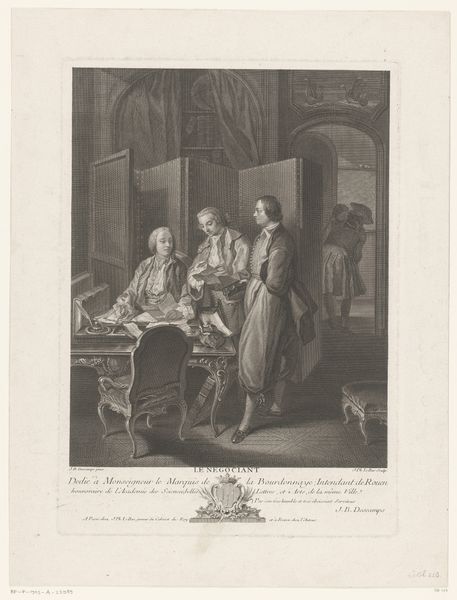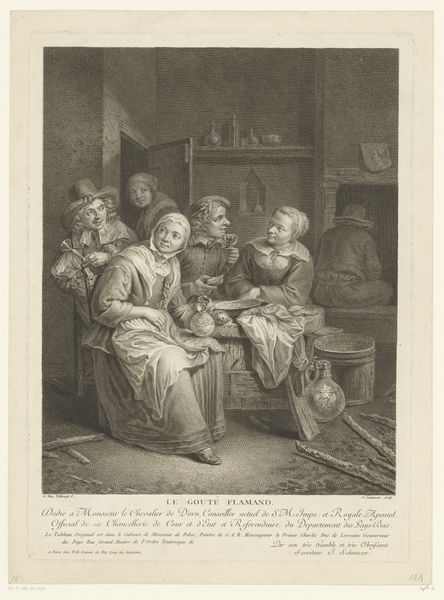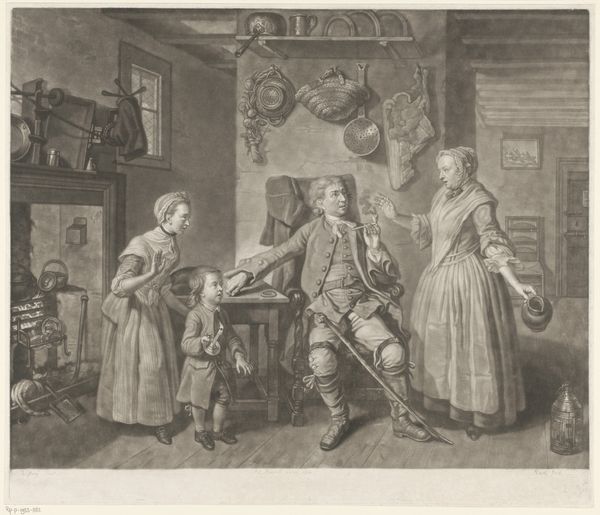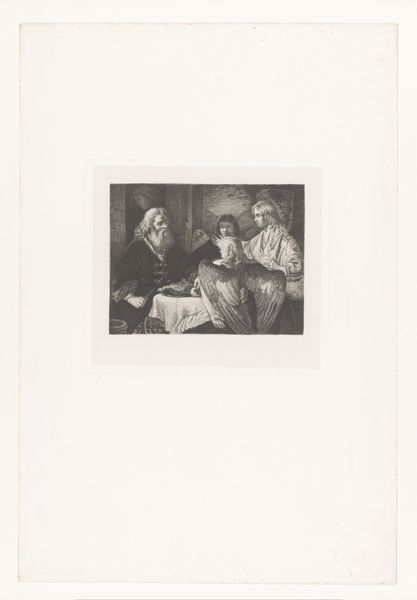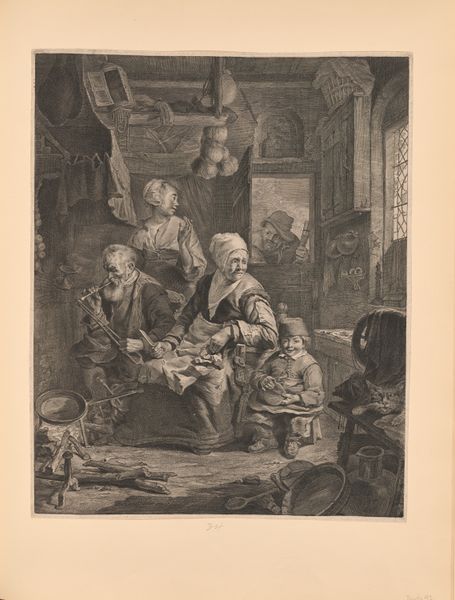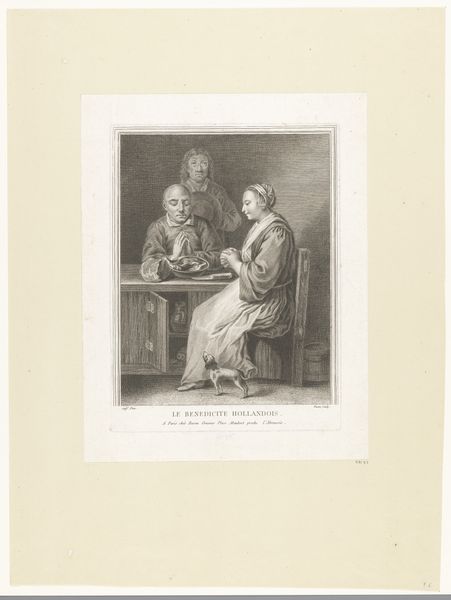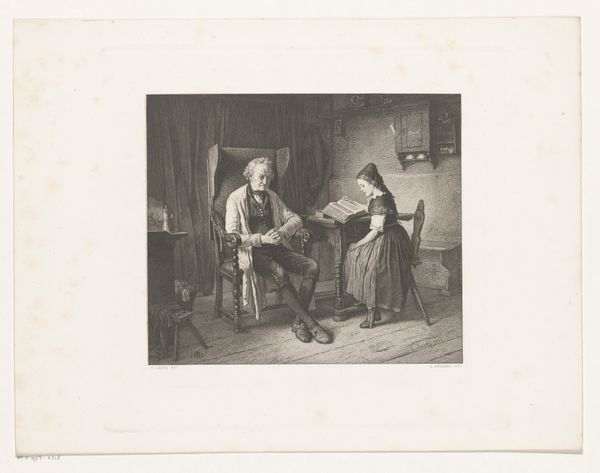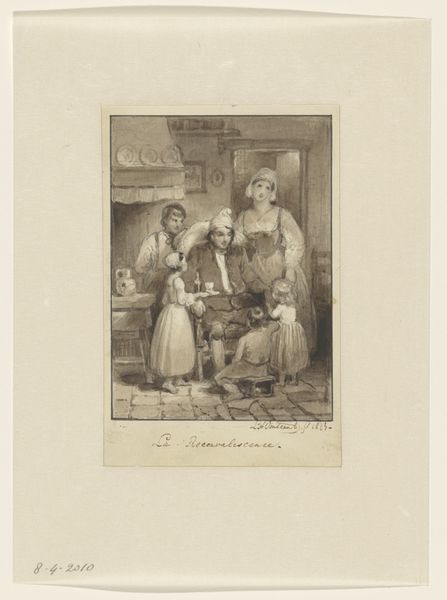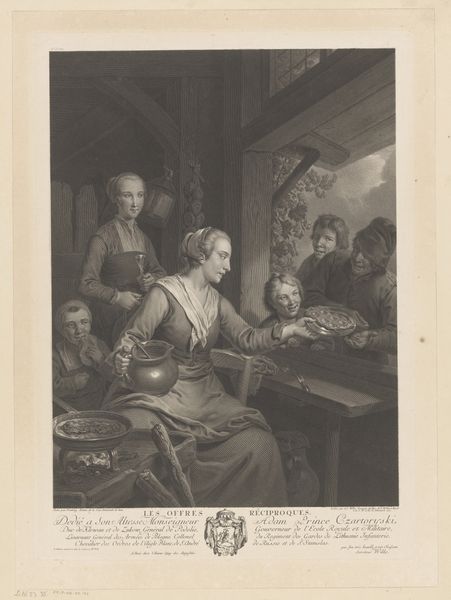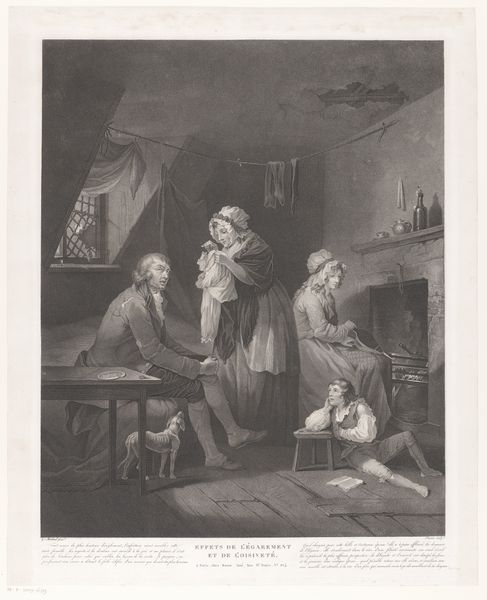
Dimensions: height 510 mm, width 404 mm
Copyright: Rijks Museum: Open Domain
Curator: Let's examine "Portrait of William, John, and George Smith of Chichester" created by William Pether around 1765. This engraving offers a glimpse into the lives of these three artist brothers. Editor: It's a somber scene, wouldn't you agree? Almost monochromatic. But it speaks to the nature of artistic collaboration and familial bonds; their faces show concentration, a shared dedication. Curator: Absolutely. As an engraving, its creation involved meticulous labor: the cutting of lines into a metal plate, the application of ink, and the pressure of the press. Each stage, a testament to skilled craft. But consider too that the act of producing this artwork, to make such portraits available on demand, involved a broader, expanding consumer economy. Editor: And that economy wasn’t innocent. The elite, their leisure, the consumption of art—all intertwined with the social hierarchies and colonial ventures of the 18th century. Were the Smith brothers actively grappling with this larger structure, and how might we locate resistance in their subject selection, and creative approaches? Curator: We also can look at the significance of the image of one painting the landscape displayed in the picture, perhaps symbolizing not just artistry but their relationship with the English countryside, maybe even pointing to class power via the visual appropriation and re-representation of land itself? Editor: The portrait raises some fascinating questions, right? How do depictions like this both reflect and reinforce the art world's relationship with power and social order? Are the artist’s actions themselves complicit with a system of political exploitation? It also allows space for viewers to examine their expectations of how paintings operate. Curator: Indeed. Pether's technique here elevates printmaking, pushing the boundaries of art production while also underscoring that this form of art making, even when documenting elite life, involved the hands of laborers and craftsmen. It speaks to the complexities of social dynamics embedded in the seemingly simple act of portraiture. Editor: Precisely. Art serves not merely as decoration or a reflection of reality, but rather as an artifact inseparable from economic systems, a kind of historical barometer that enables us to study how cultural assumptions get expressed across mediums. Curator: Reflecting on this engraving then, highlights the intricate connections between materials, making, and meaning. It challenges us to move beyond admiring its aesthetic value and interrogate the system that allowed its creation in the first place. Editor: Right. "Portrait of William, John, and George Smith of Chichester" demands that we remain conscious of its complex implications; after all, that's how art inspires and spurs change.
Comments
No comments
Be the first to comment and join the conversation on the ultimate creative platform.
